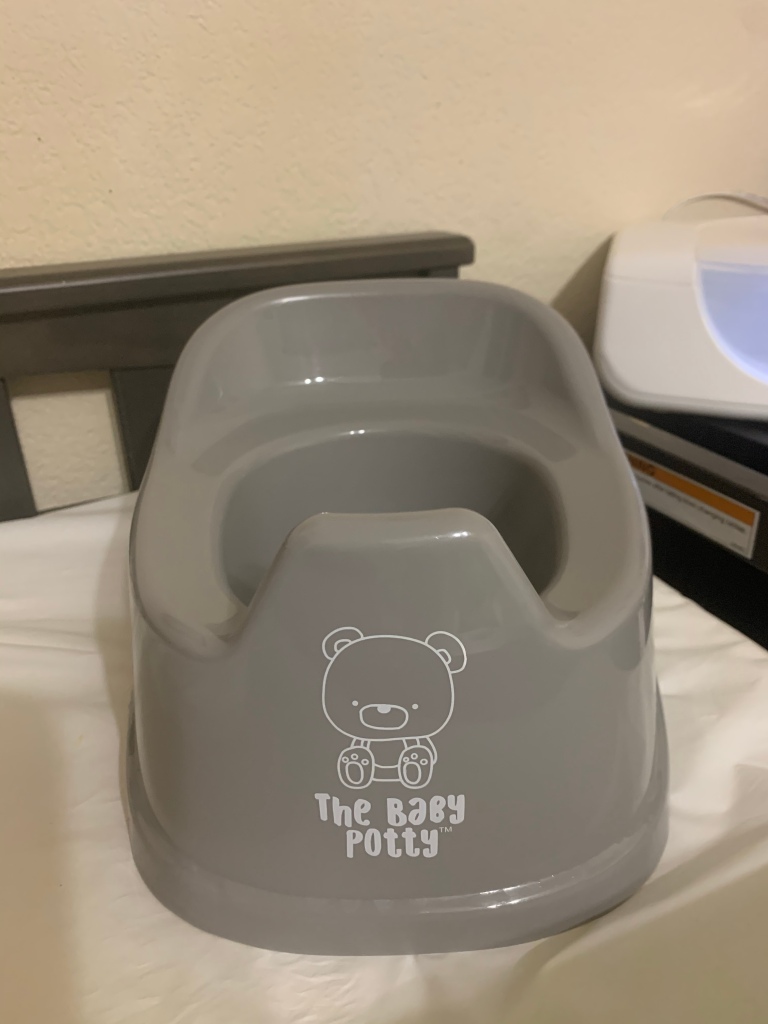Oh look! He’s pooping!! That’s so cute!
Yes, we all think that our sweet bundle of joy is just precious! And even when they poop, we love them so much. Why not help them to potty independent of diapers?
I used the book “Go Diaper Free” to help me get my EC journey started. It has been super helpful and they have great tools available on their website to assist with potty-ing a small baby. Like the baby potty.

It’s easy to tell when an infant is pooping. They grunt, turn red or sound like an explosion is happening in their pants. That makes it pretty simple to connect the dots and communicate with them about what is happening.
Babies are smarter than we give them credit for. They are not just sleeping, pooping, eating machines. They are intelligent beings and WANT to communicate. If only they knew how.
That’s where the parent comes in. We teach our children about the world and the way that it works. We can teach them how to communicate at a very young age. My boy was able to tell me when he needed to go potty at just 2 months old.

It started with me holding him over a top hat potty to catch the elimination while feeding. This was best done once he was latching well. It does take a little bit of juggling!
First step is to cue when you notice baby going. Make a psss sound for pee and grunt for poo. This gives the baby a connection for the action!
Then taking advantage of potty opportunities helps to make more “catches” in the potty instead of in the diaper. For example:
When baby wakes up.
Before baby eats.
During eating.
After eating.
When transitioning out of chair/stroller/play area.
Before nap and bedtime.
Upon arriving.
Before leaving.
Additionally, paying attention to gut instincts and phantom pee feelings helps to catch potty before it happens too.
Each child is different, but by tracking when elimination happens it is possible to find the patterns and manage helping the child to use the potty.

Babies can be potty-ed in the toilet, outdoors, top hat potty, baby potty, tub or sink. Just hold them under their thighs and wait! Cueing helps. It may take a while as they don’t have as much control over their bowels.
Some helpful tools for EC include clothes that are quick to take off, long socks, top hat potty or baby potty. Additionally I recommend getting the Go Diaper Free book to help you get the WHOLE process and how to.
I have found that cloth diapers make a great tool as well because they feel wet which helps the baby to understand the cause and effect of eliminating in their diapers as opposed to in a potty. Additionally they are great for the environment!
This has been a great adventure for me and I highly recommend it to anyone with a baby! You can start elimination communication at any time! This makes a better connection and helps to get potty training done quicker. Most babies are potty independent by one year!
Feel free to comment or reach out with any questions.
Good luck on your journey!
